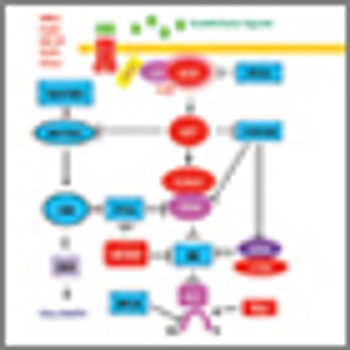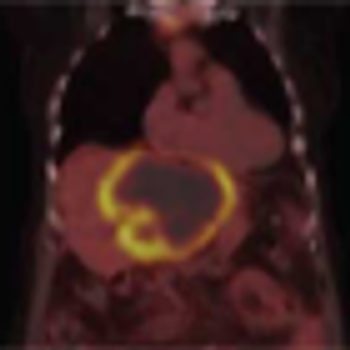
Integrating palliative care earlier in the disease process can improve quality of life and possibly survival for patients with advanced cancer but its value is widely misunderstood, according to a recent review by palliative care experts.

Your AI-Trained Oncology Knowledge Connection!


Integrating palliative care earlier in the disease process can improve quality of life and possibly survival for patients with advanced cancer but its value is widely misunderstood, according to a recent review by palliative care experts.

Adding a treatment course of local radiotherapy to hormonal treatment in men with locally advanced or high-risk prostate cancer more than halved the 10-year and 15-year prostate-cancer–specific mortality.

In this interview we discuss lung cancer prevention, the recent low-dose CT screening recommendations from the USPSTF, hurdles in preventing the disease, and more.

As the dawn of the New Year begins, perhaps it would be prudent to look back and chronicle a few selected teaching moments from 2013 that might have slipped past us.

Researchers have developed a new online risk assessment tool that can accurately estimate an individual’s risk of developing colorectal cancer.

This slide show features some of the highlights to come out of the 2013 San Antonio Breast Cancer Symposium.

Cancer death rates continue to steadily decline, according to the annual cancer statistics report from the American Cancer Society.

This slide show features some of the highlights from the 55th American Society of Hematology Annual Meeting and Exposition.


An analysis of data from the National Lung Screening Trial found that more than 18% of all lung cancers detected through low-dose CT screening were indolent.

The USPSTF published its final recommendation on screening for lung cancer on December 31, concluding that all people between the ages of 55 and 80 years who are at high risk for lung cancer should undergo low-dose CT screening.

It is difficult for me to reconcile such diametrically opposed views of the value of screening in our lives, with some researchers suggesting that no women should undergo breast cancer screening, regardless of age.

The introduction of survivorship care plans for cancer survivors may not be a cost-effective use of scarce health care resources, according to the results of a companion study of a randomized controlled trial.

Updated recommendations issued by the USPSTF state that primary care physicians should screen women who have a family history of either breast, ovarian, tubal, or peritoneal cancers for BRCA1 or BRCA2 mutations.

This slide show includes some of the highlights from the 2013 ASCO Breast Cancer Symposium, including a study looking at how many women know their breast cancer risk, a study on cardiovascular risk in DCIS patients treated with radiation, and more.

A study of cancer registry data from 29 European countries shows major improvements in both cancer diagnosis and treatment as well as large differences in outcomes for cancer patients depending on the country where treatment took place.

The strongest aspect of TCGA is that the data are publically available, fueling the input needed for unparalleled discovery. As the broader scientific community continues to analyze and integrate TCGA data with their own datasets, it is highly likely that breast cancer patients will benefit.

TCGA’s efforts to dissect the genomic complexity found in breast cancer patients represents only the beginning of a journey toward better understanding of the intricacy of the events that lead to this disease. Additional efforts are required to provide tailored and effective therapeutic interventions.

Shortly after the rollout of the new healthcare exchanges, we asked the members of ONCOLOGY’s Editorial Board to share their impressions of what they were seeing-and what they expected to see-in terms of the effects of the ACA on practicing oncologists and their patients.

The development and approval of oncology therapeutics has been facilitated by the cooperation and coordination of regulatory practices between the EMA and the FDA. However, there continue to be important differences between the decisions of the two agencies.

This article aims to provide an overview of The Cancer Genome Atlas findings, with a particular focus on their potential biological relevance and therapeutic implications.

In this interview we discuss advances in whole-genome analyses, as well as novel blood-based assays in development to help diagnose and follow cancer patients through their treatment.

Although the room was dark, the moon streaming through the windows cast uneasy half-shadows on the carpet. The only sound was the rhythmic ticking of a mantel clock. As I peered in into the gloom I was startled by a thin woman, wrapped in lace, standing across from me.

The FDA has approved sorafenib (Nexavar) for the treatment of metastatic differentiated thyroid cancer.

In this podcast, we discuss whether all male colorectal cancer patients over the age of 60 should be screened for prostate cancer.

A 65-year-old woman with rheumatoid arthritis and autoimmune hepatitis presented to clinic for evaluation of a liver mass. Six months prior to presentation, workup was initiated for elevated liver enzyme levels.

The historical rationale for the 340b program is a good one: indigent patients do need reliable access to prescription drugs, and entities meeting this need should be supported. However, the evolution of the 340b program has strayed widely from its original intent.

If payments were bundled, we would be accountable to evaluate our treatment plans, follow-up visits, tests, and imaging. We need a system that rewards us for excellent care and allows the costs to be presented to our patients.

An analysis of four randomized clinical trials from Europe shows that HPV-based screening resulted in a greater long-term protection from invasive cervical cancer compared with a Pap test.

This slide show features highlights from the 2013 European Cancer Congress, including trials on PSA screening, melanoma, ovarian cancer, HER2-positive breast cancer, lung cancer, and colorectal cancer.